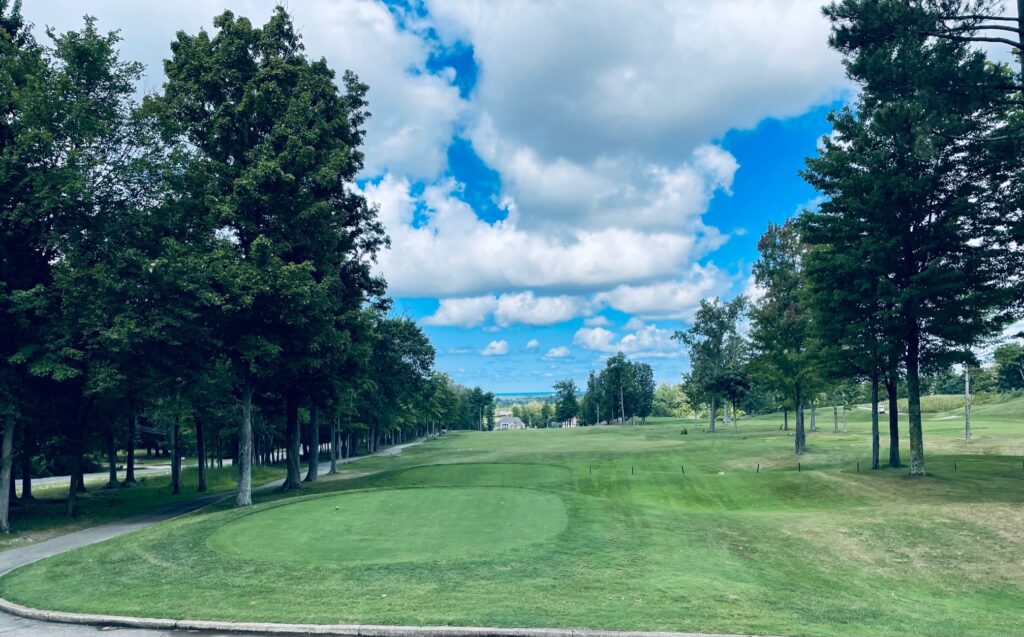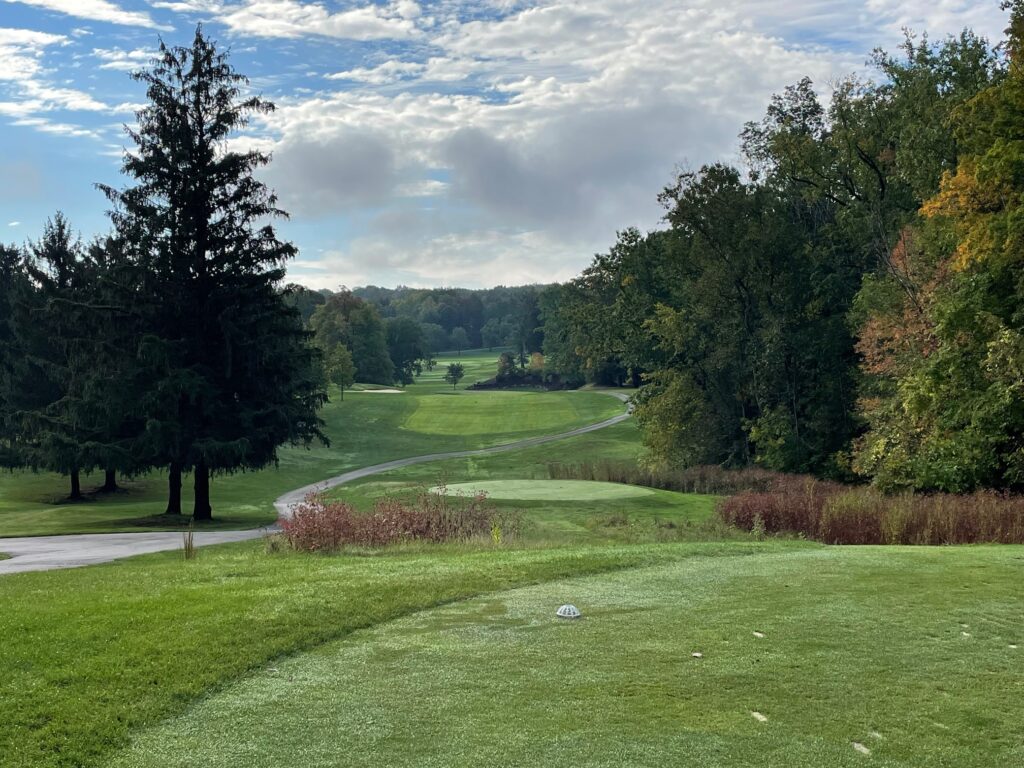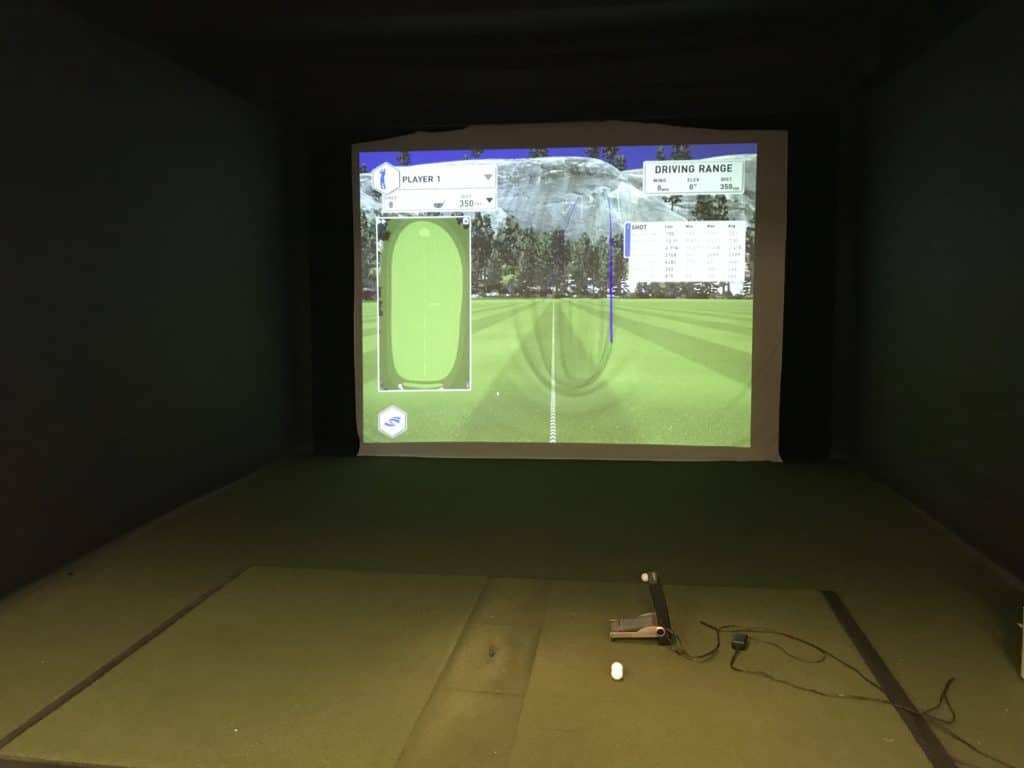If you are feeling down in the dumps about your golf game, you are not alone.
Anyone that has played any level of serious golf or a decent amount of golf in one golf season can relate with the ups and downs of the golf game.
That is part of the reason we like to think of golf as a journey and the basis of our name here at golfjourney365. Daily, we can enjoy the game, challenge your game and most importantly work to get better.
The bottom line is that golf is not easy. You never really “figure” the game out, all you can do is build skill, analyze your strengths and weaknesses and get to work! Don’t forget to enjoy the journey along the way and have fun.
Below, we will dive into our 7 recommendations of what to do after a bad round of golf.
What To Do After A Bad Round of Golf?
We would recommend you look at the options below and pick 2-3 to help you enjoy your journey and turn your golf season around:
- Assess Your Game
- Build Skill
- Manage Your Expectations
- Go Play Again
- Take A Break
- Seek Help
- Have Fun – Grateful Heart

Option #1: Assess Your Game
What is holding your back from performing at your expected level? Is it the driver, the approach shots, your wedges, chipping or putting? Or are you lacking solid contact, consistent ball flight or maybe you are lacking distance? We believe the game of golf is built on 3 key fundamentals.
Ultimately, golf comes down to three basic skills that every golfer should be working on on their journey. Which of these areas are your potential struggling with?
- Low Point Control: This plays a major impact on the quality of the strike. The best golfers are able to control their low point over 99% of the time, while the weakest golfers struggle to control the low point even 50% of the time.
- Start Line and Predictable Curve: The best golfers are able to start their golf ball on the intended start line a high percentage of the time and have confidence that the ball will have a predictable curve (draw or fade). This is often referred to as a stock shot.
- Distance: The golfer must have enough swing speed to play the course.
Reflect back on your previous round or two and track the following stats:
- Percentage of shots you hit solid
- Percentage of shots that started on your intended line
- Percentage of shots that had the curve you were trying to play
- Percentage of drives that flew the expected distance
- Percentage of shots that you hit the right distance (approach shots)
- How many up and down opportunities did you have and how many times did you save part?
Why does my golf swing feel awkward?

Option #2: Build Skill
The skill driven work should be in one of the three areas if you are struggling with the full swing:
- Solid Contact
- Stock Shot Development
- Speed Training
Here are three excellent drills or training protocols you can use for the rest of your golf journey!
Can watching golf improve my game?
Drill #1: The Low Point Control Drill
- Take some yard paint and paint a 1-2 yard long line.
- Setup with 55% of your weight on your front side.
- Try to hit the target side of the line and see how many times out of 10 you can do this successfully!
- Repeat this drill every day for a month, tracking your progress and your ability to do this successfully in trials of ten.
- You may need to start with half swing and progress to full swings.
If you are struggling, put more weight forward and work on keeping your head still to help control the low point in the swing.
Drill #2: Stock Shot Drill
- At the driving range, set up an alignment stick about 6-8 yards in front of you, straight down your target line.
- If you have a second alignment stick, set the stick 3-4 feet right of the first stick (for a draw) or left of the first stick (for a fade).
- Complete your initial assessment to see how many times out of 10 you can start the ball to the right or left of your target. Pick one side and measure your game at this point.
- The goal is to eventually complete this successfully 7 out of 10 times!
Training Protocol: Speed Training Drill With SuperSpeed Golf
The game of golf has evolved to where speed is important in the game of golf. The faster your swing, the further the ball flies and the more shorter irons or wedges you have into a green.
Training for speed is a great idea and one worth exploring!
If you are going to train for speed, I would highly recommend the SuperSpeed Training System.
Gone are the days of simply being content with the distance you currently hit your golf ball. Many older golfers have proven over the past several years that an increase in swing speed is possible.
There are training systems to help you get your game to the next level and distance is arguably the fastest way to make this happen!
My number one recommendation is to check out SuperSpeed Golf and their protocols to help you find a safe way to increase your swing speed.
I spent many years wondering how I can increase my swing speed. When I was playing junior golf, we weren’t fortunate enough to have some of the training aids and knowledge that is now available. Smart people have studied the golf swing and have created training aids and protocols to help all golfers increase their distance!
At around the same time, the statistics from the PGA Tour have become more clear and the importance of speed is acknowledged by many to be a key to being the best on the PGA Tour.
Within the past several years, there have been several products hit the market to make speed gains possible. While many people for many years waited for the latest driver to come out to gain an additional 5-10 yards, you can now do this even with your current clubs.
Did you know that with the SuperSpeed Training System you can gain 5-8% increase in swing speed as early as the first training session? This would allow you to gain somewhere between 10 and 30 yards depending on your current swing speed.
The SuperSpeed Training System is based on three different swing speed sticks all weighing at different weights. There is a green club that is 10% lighter than the average driver, the blue club which is 5% lighter and the red club which is actually 5% heavier!
Following their prescribed protocols the golfer completes the training every other day. The total time to complete most of their protocols is between 10-15 minutes. Most people can find the time to make this happen. The golfer will also need a swing radar to measure their progress.
The science behind the SuperSpeed Training System is based on overspeed training. Overspeed training has been around for several decades now and has been used by olympic athletics in the sport of Track and Field.
The science behind this overspeed training is based on the premise that your brain will only allow your body to move as fast as it feels it can stop safely! So, you get to work and swing the clubs as fast as possible, retraining your brain to allow you to swing your driver faster.
For more permanent results, the golfer should continue these training protocols for several months. The initial 5-8% is great and can become more permanent with the right length of training. The golfer can expect to continue to break down barriers every several months at a 1-2% increase.
My own experience has been an increase of 7-10 miles per hour on average from between 98-101 all the way up to 106-109. My goal is to hit the PGA Tour average of 113 mph in the coming months. I will continue to train every other day and watch in amazement as I am hitting drivers longer now than ever before!
Phil Mickelson (a senior golfer now) has been known to increase his swing speed in the past year or so and is close to 120 miles per hour in his swing speed. There are potential results for golfers of all ability levels and age!
Check the current price on SuperSpeed Golf System, here!
| Original Swing Speed | After 4-6 Weeks | New Carry Distance | Total Distance |
| 95 | 102 | 245 | 265 |
| 100 | 108 | 259 | 279 |
| 105 | 113 | 271 | 291 |
| 110 | 118 | 283 | 303 |

Option #3: Manage Your Expectations
Too many golfers have unrealistic expectations. Earlier today I played in a four man scramble and on shots from 145 yards, people on our team were expecting us to hit it to 5 feet every time. When in reality, that would be a great shot for a PGA Tour player.
Here are some key stats to keep in mind if you are growing frustrated with your lack of execution. Some of these stats might help put your shots into a better perspective and stop beating yourself up after every shot you hit or every putt you miss!
- The average proximity to the pin from a 100 yard shot in the fairway on the PGA Tour is 18 feet.
- The average proximity to the pin from 125-150 yards from the fairway on the PGA Tour is 23’4”
- The average proximity to the pin from 150-175 yards from the fairway on the PGA Tour is 28’6”
- The average make percentage from 8 feet on the PGA Tour is 50%
Keep these stats in mind the next time you play and maybe you can get less frustrated, which will help your overall enjoyment and most likely your score!
Option #4: Go Play Again
After a bad round of golf, get back out there and play! If you still feel fresh, maybe you need to get comfortable on the course and hitting golf course-like shots! Stop beating yourself up, stop feeling bad for yourself, and go play the game we all love!
Keep in mind that golf is supposed to be fun, take on the challenge of hitting every shot and test your skill level!
It might be as simple as your alignment – How to check your alignment!

Option #5: Take A Break
If you are feeling burned out, maybe it is time to take 7-10 days off from the game. Get your mind right, maybe head to the range for a practice session and find your enjoyment in the game once again. You might have some bad habits creeping in that 7-10 days away from the game could help with!
How to practice golf without going to the range (9 Options)
Option #6: Seek Help
Maybe it is time to have someone take a look at your swing. One or two drills that help you with your current issue might get you back on track quickly.
Not every golf lesson or practice session has to be about rebuilding the golf swing. Instead, find your quick fix, work on a drill or two and get back out there! There are some viable options online if you are in a location where you don’t have access to the best instruction out there!
Best online golf instructors (Top 5)

Option #7: Have Fun – Grateful Heart!
Playing golf is a blessing and is supposed to be fun. There is a time every golf season where playing golf can feel like a job or a chore. This is a great time to look around, enjoy the outdoors and the golf course and remind yourself to have a grateful heart that you get to play such a fantastic game.
One trick I have used when playing golf:
- At least once a hole, take time, look up at the sky and remind yourself how fortunate you are to be playing golf that day! These moments seem to put me right back in the right frame of mind and I produce better shots!
3 Best Mental Game Golf Resources!
Next Steps: Get To Work!
Golf is supposed to be a journey. Embrace it and get to work! Just make sure you are enjoying the work and keeping it fun. At your range sessions, play some games and compete with a friend if you have one with you at the practice session!
The big turning point in my game was when I could practice golf in the comfort of my garage, 365 days a year! It is truly a great way to finally get over the hump and play your best golf yet!
Here is more information below!
My Secret To Golf Improvement
Let’s face it, in order to get really good at golf, we must practice frequently. About three years ago, I made the leap and invested in a golf simulator build for my garage. I went with a SkyTrak Launch Monitor and the TGC software and can now play over 100,000 courses including Augusta, Pebble Beach, Bethpage Black, Whistling Straits. St. Andrews and many other of the top 100 courses in the world.
This golf simulator setup, which is more affordable that you might imagine, has been a game changer. I can now play golf everyday of the year regardless of rain, snow, cold weather or time of day. I can practice or play rounds of golf. I can stand in the 11th fairway at Augusta and with the auto-rewind feature I am able to practice my approach shots from various differences.
It is worth checking out through Rain or Shine Golf as they offer some incredible packages along with financing offers that are difficult to beat.
Some direct links to Rain or Shine Golf for pricing and financing:

Take Action – What You Can Do Today to Get Better
What does this mean for you? I believe in the following recipe to get better:
1 – Improve your motion in the golf swing by identifying a golf instructor. Here are some options:
Here is a list of golf instructors that we have reviewed:
2 – Train to swing faster and improve your swing speed. Here are some options:
Looking to gain more Speed and Distance in your swing. Two Options:
3 – Understand course strategy and work to break through your next barrier. Here is a series on breaking through:
We have provided guides on how to break 100, 90, 80 and 70. Check out more below, if interested.
4 – Practice Frequently
Did you know that I build a golf simulator in my garage and have played over 500 rounds of golf on my SkyTrak system? It has been a game changer and one worth checking out. Here are some of my other posts on golf simulators frequently asked questions:
- Is a Golf Simulator Worth It?
- How to Build a Golf Simulator?
- What is the Best Golf Simulator?
- Golf Simulator Accessories?
- How to Build a Golf Simulator for under $7000
- Top 11 Reasons to Buy a SkyTrak
- How to Build a Golf Simulator for Under $1000
- Why Build A Golf Simulator?
- What Space is Needed?
- Can A Golf Simulator Improve My Game?
- How Much Does A Golf Simulator Cost?
- Don’t Forget to Check out our 15 best golf swings of all time.
I am an amateur golfer on a journey to get better, enjoy the game as often as possible and share my passion and knowledge with others. I have coached high school golfers at a high level and have a great passion for the game and want to give back. I enjoy learning about the golf swing and am currently studying to be a certified professional golf instructor. Join me in our journey to get better everyday. Thank you for reading!

